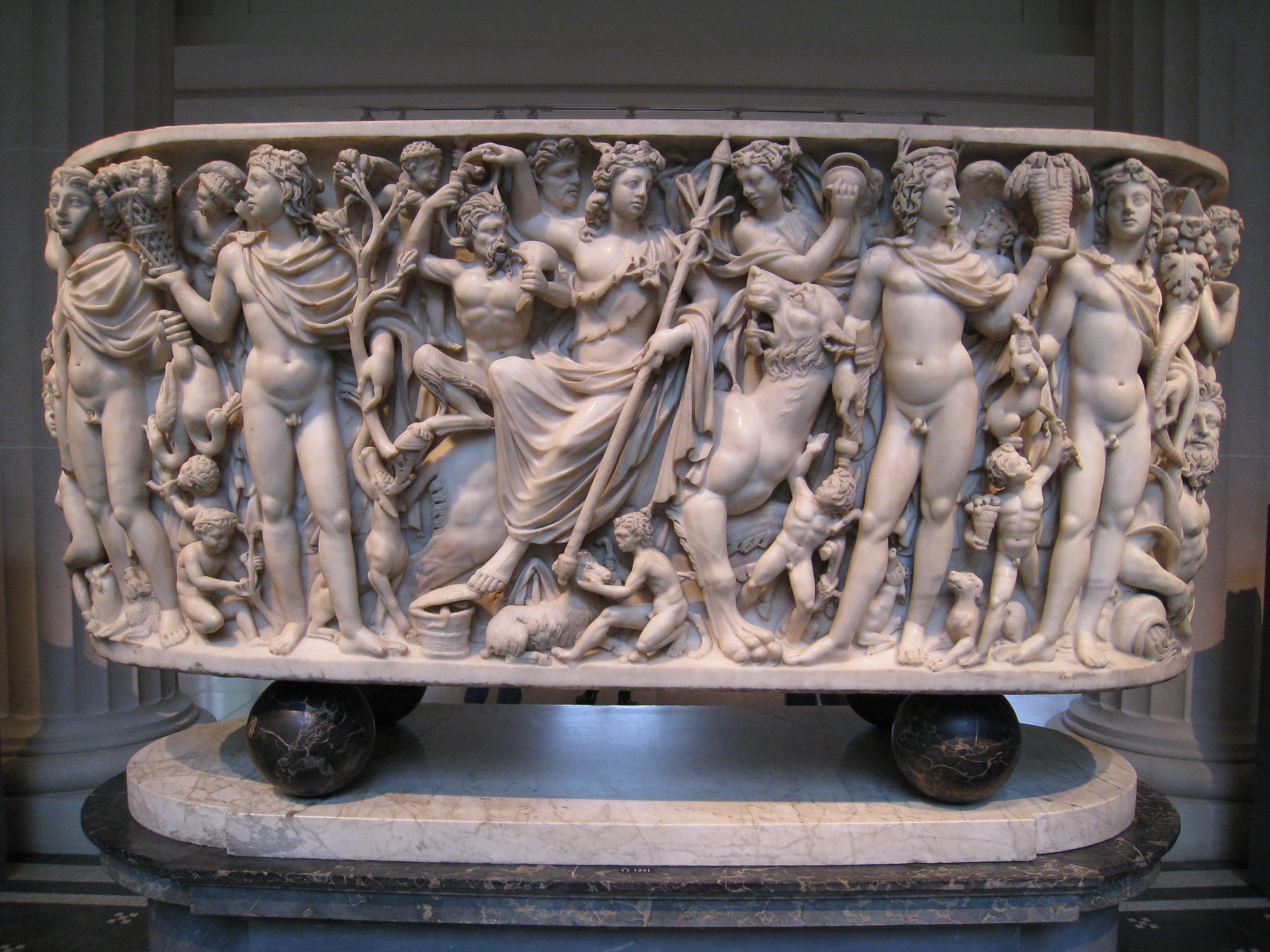Greeks and Romans in antiquity loved mythology. They depicted images on pottery, on frescos. They decorated their villas and palaces, and made these stories part of their daily lives. They loved these stories so much so that even in death they wanted to be reminded of them through beautifully engraved sarcophaguses.
Pliny the Elder, in The Natural History, mentions an observation of a sarcophagus.
At Assos in Troas, there is found a stone of a laminated texture, called sarcophagus. It is a well-known fact, that dead bodies, when buried in this stone, are consumed in the course of forty days, with the sole exception of the teeth. According to Mucianus, too, mirrors, body-scrapers, garments, and shoes, that have been buried with the dead, become transformed into stone. In Lycia, and in the East, there are certain stones of a similar nature, which, when attached to the bodies of the living even, corrode the flesh.[1]
The word sarcophagus comes from σάρξ, [sarks] “flesh,” and φάγω, [phagō]”to eat.” Ajasson de Grandsagne identifies this stone with Alunite, or Alum stone, in its several varieties.[2]
In this gallery, we visit some of the examples of art for the deceased.
Notes
[1] The Natural History, Pliny the Elder, CHAP. 27. (17.)—SARCOPHAGUS, OR STONE OF ASSOS: TEN REMEDIES. translated by John Bostock, M.D., F.R.S. H.T. Riley, Esq., B.A. London. Taylor and Francis, Red Lion Court, Fleet Street. 1855, via Perseus.
[2] From the Footnote of above section by John Bostock
Image Credits
Sarcophagus of the Muses, Sarcophagus known as the “Muses Sarcophagus”, representing the nine Muses and their attributes. Marble, first half of the 2nd century AD, found by the Via Ostiense.
Photo by: Jastrow, public domain via Wikimedia Commons
Marble Sarcophagus with the Triumph of Dionysos and the Seasons, “The central figure is that of the god Dionysos seated on a panther, but he is somewhat overshadowed by four larger standing figures who represent the four Seasons (from left to right, Winter, Spring, Summer, and Fall).”, public domain via the Met Museum
Phaedra and Hippolytus, front of a marble sarcophagus, ca. 290 AD. Found in 1853 on the Chiarone river banks (Tuscany, Italy), on the former Emilia-Aurelia road. public domain via Wikimedia Commons
Calydonian Hunt, Sarcophagus with the Calydonian hunt, representing the hero Meleager and the goddess Artemis. Proconnesian marble, Roman artwork.
Photo by: Jastrow, public domain via Wikimedia Commons
Alexander Sarcophagus, Istanbul Archaeological Museum.
Photo by: Kingbjelica, via Wikimedia Commons, Creative Commons Attribution-Share Alike 4.0 International
Lycian Sarcophagus, Istanbul Archaeological Museum.
Photo by: oncenwhile, public domain via Wikimedia Commons
Marble Sarcophagus with the myth of Selene and Endymion,”The story of Endymion is shown in strongly undercut relief on the front of the sarcophagus. In the center, Selene, the moon goddess, alights from her chariot to visit her beloved, the shepherd Endymion, who reclines at the right. Endymion, most beautiful of men, has been granted eternal youth and eternal sleep.”
Public domain via the Met Museum
Marble Sarcophagus with garlands, “Garlands of oak leaves supported by two erotes and four Victories adorn the front and sides. Medusa heads fill the spaces above the garlands, except in the center of the front, where there is the blank inscription tablet. Six erotes hunt various wild animals along the front face of the cover, while two others stand at the corners. On the left end, Eros awakens Psyche with an arrow, and on the right, they embrace.”
Public domain via the Met Museum
Sarcophagus with a Greek Physician, “The tomb’s owner is shown seated with an open scroll, the pose of a philosopher, demonstrating that he is a learned man. His profession can be identified by the open case containing surgical tools on the cabinet top. Other scrolls and a basin for bleeding patients within the cabinet offer further proof of his profession. The style of his dress and the language of the inscription indicate that he was one of the many Greeks living in Italy.”
Public domain via the Met Museum
Marble Sarcophagus lid with reclining couple, “The couple are shown as semidivine personifications of water and earth. Like Hellenistic and Roman images of river gods, the bare-chested man holds a long reed, and a lizard-like creature crouches beside him. The woman holds a garland and two sheaves of wheat, attributes of Tellus, goddess of the earth. At her feet is a furry-tailed mammal with a small Eros on its back. While the man’s head is carefully portrayed, his wife’s head has been left unfinished, suggesting that he predeceased her, and no one added her portrait after she died.”
Public domain via the Met Museum
Janet M. Ozsolak is a member of Kosmos Society









